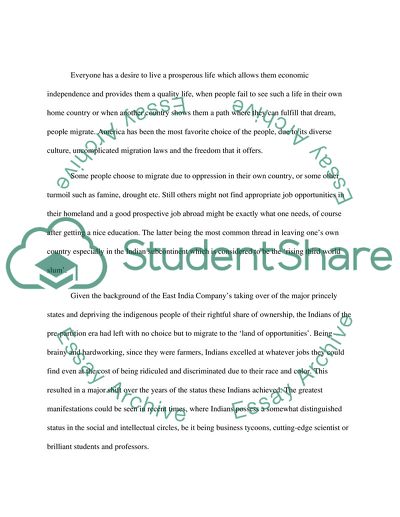Cite this document
(Non-Resident Indian and Person of Indian Origin Research Paper, n.d.)
Non-Resident Indian and Person of Indian Origin Research Paper. Retrieved from https://studentshare.org/history/1737514-to-prove-that-indians-that-have-immigrated-to-the-united-states-contribute-to-the-united-states-by-starting-companies-working-in-government-to-help-citizens-in-the-us-and-also-work-to-help-our-foreign-relations-to-combat-the-bad-sterotypes-of-indians-in
Non-Resident Indian and Person of Indian Origin Research Paper. Retrieved from https://studentshare.org/history/1737514-to-prove-that-indians-that-have-immigrated-to-the-united-states-contribute-to-the-united-states-by-starting-companies-working-in-government-to-help-citizens-in-the-us-and-also-work-to-help-our-foreign-relations-to-combat-the-bad-sterotypes-of-indians-in
(Non-Resident Indian and Person of Indian Origin Research Paper)
Non-Resident Indian and Person of Indian Origin Research Paper. https://studentshare.org/history/1737514-to-prove-that-indians-that-have-immigrated-to-the-united-states-contribute-to-the-united-states-by-starting-companies-working-in-government-to-help-citizens-in-the-us-and-also-work-to-help-our-foreign-relations-to-combat-the-bad-sterotypes-of-indians-in.
Non-Resident Indian and Person of Indian Origin Research Paper. https://studentshare.org/history/1737514-to-prove-that-indians-that-have-immigrated-to-the-united-states-contribute-to-the-united-states-by-starting-companies-working-in-government-to-help-citizens-in-the-us-and-also-work-to-help-our-foreign-relations-to-combat-the-bad-sterotypes-of-indians-in.
“Non-Resident Indian and Person of Indian Origin Research Paper”, n.d. https://studentshare.org/history/1737514-to-prove-that-indians-that-have-immigrated-to-the-united-states-contribute-to-the-united-states-by-starting-companies-working-in-government-to-help-citizens-in-the-us-and-also-work-to-help-our-foreign-relations-to-combat-the-bad-sterotypes-of-indians-in.


